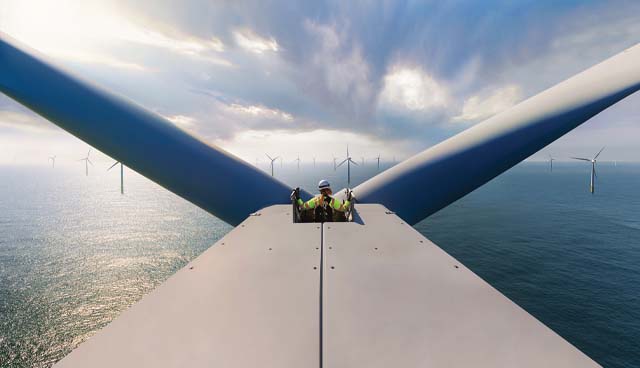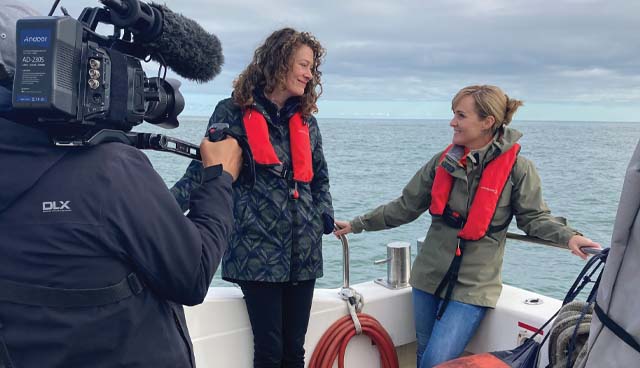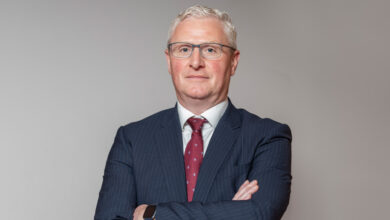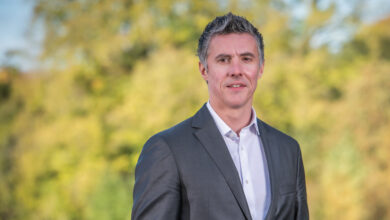SSE Renewables: Power to progress

Maria Ryan, Director of Development at SSE Renewables, outlines the opportunities and challenges for renewable energy in Northern Ireland.
Is Northern Ireland maximising its potential when it comes to sourcing energy from renewable sources?
The recent discussions around energy policy in Northern Ireland and indeed globally, alongside the need to urgently address the climate emergency, illustrate that all of us can be doing more as individuals, communities and society to reduce carbon emissions and increase the use of renewable energy sources. We now have more than 45 per cent of the electricity consumed in Northern Ireland produced from renewable sources but like elsewhere we could and should be doing so much more. To achieve at least 70 per cent renewable electricity by 2030 and get to 80 per cent which is what we believe the aim should be, onshore wind will need to be the main driver. That is one reason why the new Energy Strategy coming from the Executive is so important and we really want to see ambitious targets for renewable energy levels.
What needs to happen politically to support the renewable sector locally?
The Energy Strategy, when it is published, needs to be supported by all Executive departments and not just the Department for the Economy, which has led on policy development to date. Northern Ireland really needs a joined-up approach so that agreed high level targets are matched with clear actions across all departments and local councils. The planning system has been too slow and cumbersome for too long, and that is why we welcome the upcoming review of energy-related planning policy from the Department for Infrastructure. Planning is currently a barrier for investment in major infrastructure projects, particularly because of the length of time it takes to achieve planning in comparison with other jurisdictions. The energy grid also requires significant investment. This will be critical to ensure that we can optimise the performance of existing sites and ensure future projects can be brought forward competitively.
We need politicians to take strategic decisions in relation to renewable infrastructure projects. There is very little point in supporting 70 per cent renewable energy, or indeed 80 per cent as has been recently committed to in the Republic of Ireland, and not granting planning consent to projects which will support the delivery of that target. Those two positions are not mutually exclusive however, and hopefully the discussions and outcome of COP26 and the realisation of what is needed globally and locally will lead to a new political and durable approach.
What is the potential for offshore wind in Ireland, north and south?
The development of offshore renewable energy across the island presents an exciting and important opportunity. It is still an evolving industry with the potential to contribute to fighting the climate crisis and creating thousands of jobs. Offshore wind offers a scale of generation which goes beyond what is deliverable onshore. SSE Renewables is already active in this sector through our Arklow Bank Wind Park Phase 2 off the County Wicklow coast which has the potential to be operational by 2025. The project will require an investment of between approximately £1–£2 billion to deliver and really can kickstart a green economic revolution while positioning the island as a global player in the offshore renewable market.

Indeed, offshore wind presents an exciting opportunity for Northern Ireland, but projects take at least 10 years to plan and deliver in our experience. We expect it will be after 2030 before an offshore wind project could become operational in Northern Ireland. To enable projects to come on stream, preparations in relation to grid, consenting and route to market need to commence now, and to clearly indicate that Northern Ireland is serious about delivering decarbonisation at significant scale.
What other ‘green’ technologies can help power a green energy supply?
While we seek to expand our onshore and offshore wind projects we are also finding clean solutions for those times when the wind doesn’t blow, by pioneering new carbon capture and hydrogen technologies. Our colleagues in SSE Airtricity are also ensuring our customers have the access they need to low carbon energy solutions from clean energy supply to building retrofits and solar panels.
It is so important that we move forward in a multitude of directions because there is no single answer to the climate change challenge. The solution will ultimately be the collective contribution of all of these different innovations.
Are you optimistic or pessimistic on the future of renewable energy in Northern Ireland?
Oh, I am hugely optimistic! While COP26 may not have delivered as fully as we would have liked there is no doubt that the global direction of travel is towards zero emissions and towards maximising renewable output. Northern Ireland is a small region globally but why should we not, as an island, north and south, lead the way in developing new technologies and harnessing renewable energy?
The prize for getting this right will be a sustainable energy system that increases the attractiveness of Northern Ireland to international investment so the benefits can be measured in prosperity for future generations as well as a sustainable environment. Inaction, on the other hand, risks us getting left behind.
www.sserenewables.com






